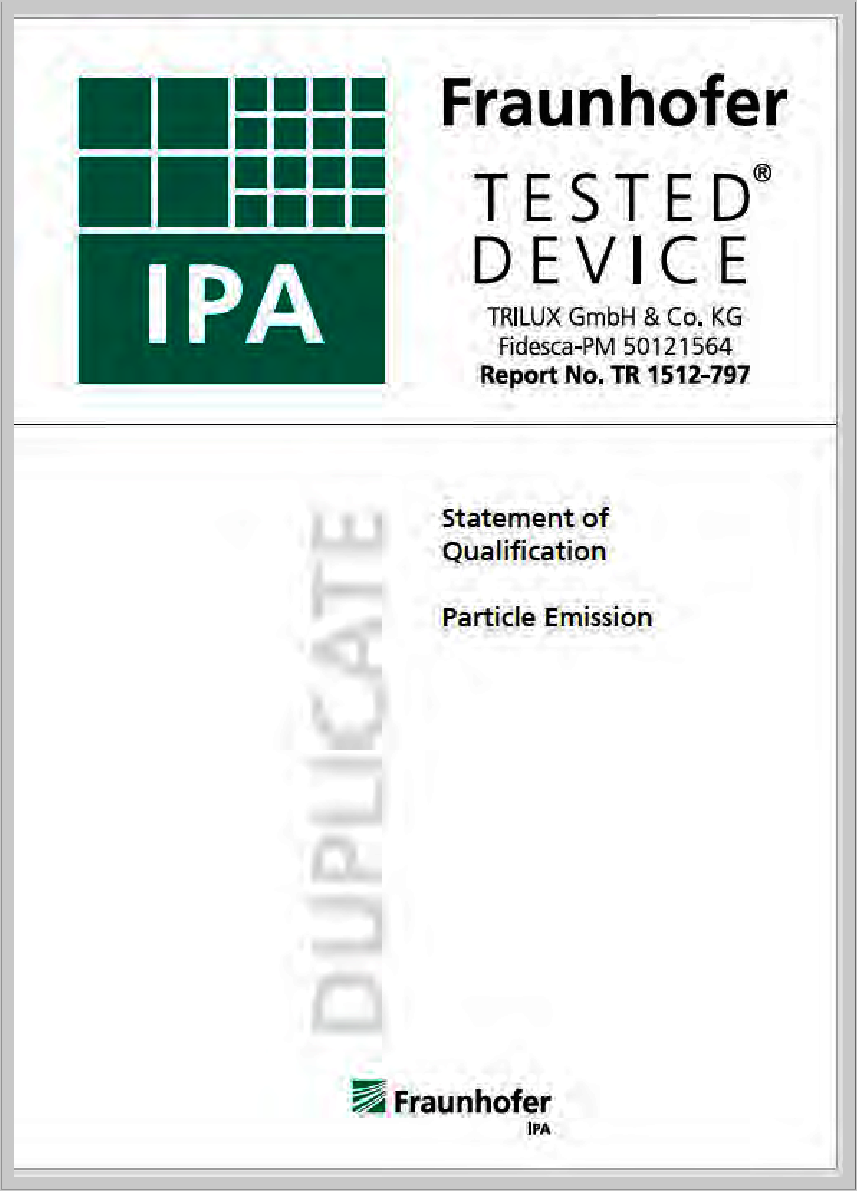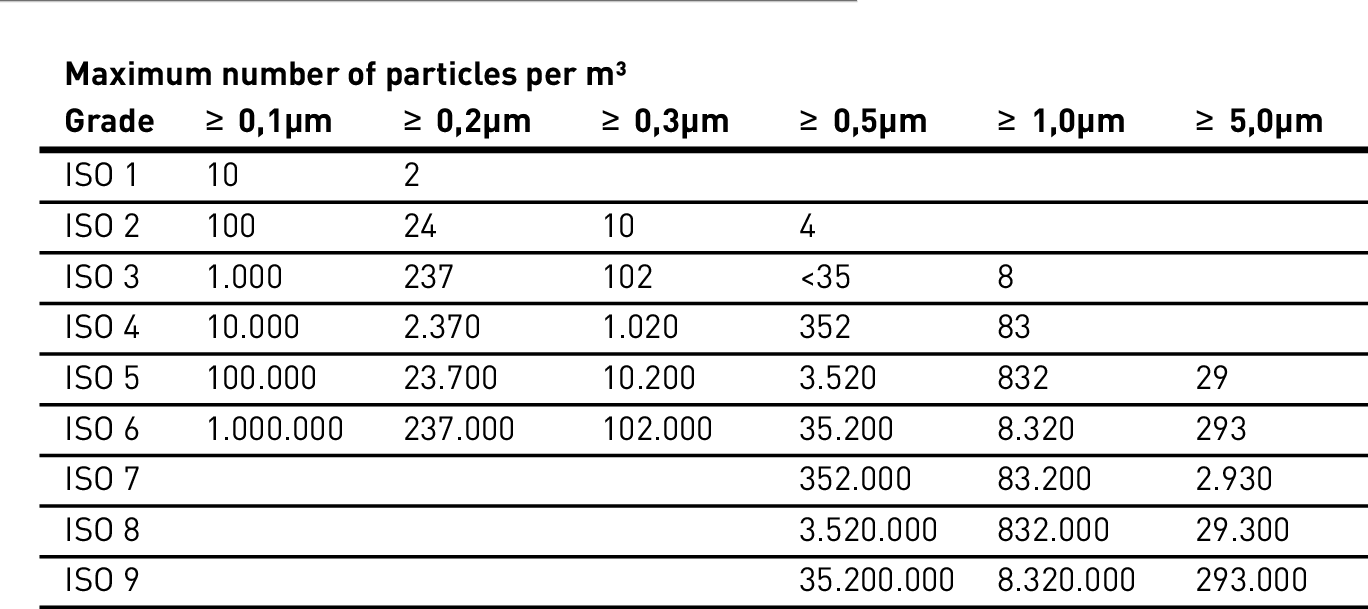Cleanroom requirements vary significantly, just like the tasks performed within them. From operating theatres in a clinic to drug manufacturing in the pharmaceutical industry to chip manufacturing in microelectronics, the aim is to avoid contamination with unwanted particles.
Clean rooms

Figure 3.222: Qualification certificate for a luminaire regarding suitability for cleanroom use

Table 3.162: Cleanroom classes according to DIN EN ISO 14644-1

Table 3.163: Cleanroom classes according to VDI directive 2083
At international level, there are different standards dividing up rooms into classes according to the permissible concentration of particles of defined sizes present in the respective room’s air (see tables 6.5). The international standard DIN EN ISO 14644-1 (2014-11) which has been adopted into the European and German standard system as well as VDI directive 2083 (2013-01) are widely spread in application.
The criteria applied to technical devices in cleanrooms, e.g. luminaires, are varied and vastly different. For luminaires to simply be dust proof, meaning incapable of absorbing dust into their interior or emitting it from the inside is not sufficient. For classes of lower digit values, the shape and quality of the surface is also important. It can be explained through the fact that e.g. in some cases, keeping the air clean requires permanent ventilation with laminar air flow. Particles also must not attach to the surface and accumulate there.
Verifying a luminaire's suitability for cleanroom use is therefore associated with a number of tests, the passing of which can be documented with a certificate for each specifically tested luminaire construction. TRILUX cleanroom luminaires are tested for elevated requirements at the Fraunhofer Institute IPA in Stuttgart (see figure). Certificates can be requested via technical support.